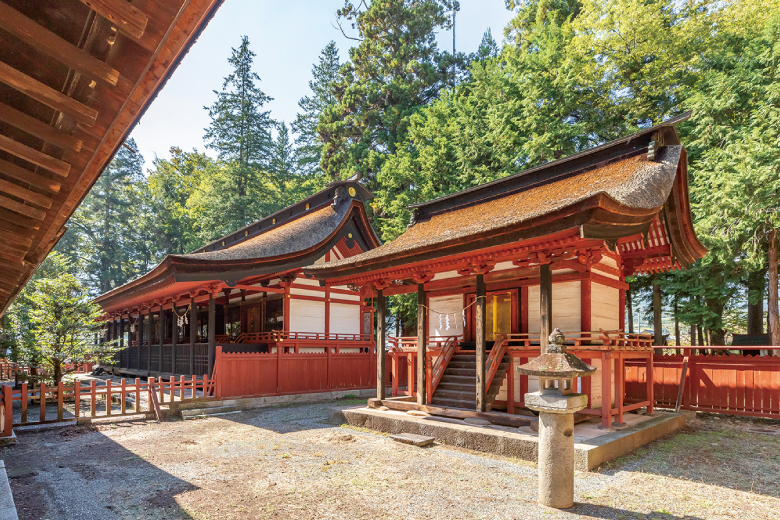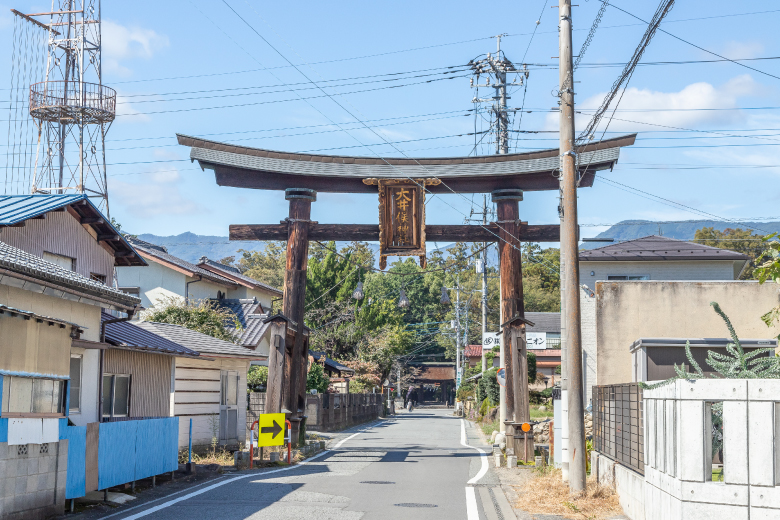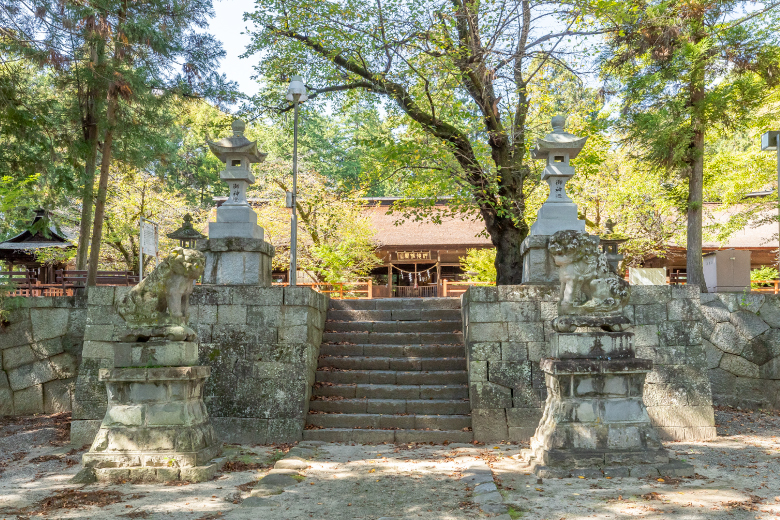Oimata Kubohachiman-jinja Shrine was founded in 859 when Emperor Seiwa offered a prayer to summon the Usa Hachiman deity to the shrine. It was transferred to its present location in the late Heian Period (794–1185). During the reign of Takeda Nobutora, the eighteenth head of the Takeda Clan, the shrine suffered the ravages of a war that began with an invasion by an army of the Suruga Imagawa Clan in 1516. However, Nobutora and Shingen thereafter provided support to restore the shrine and fervently venerated it as a shrine for offering prayers. The layout of the shrine precincts has remained virtually unchanged since the Warring States Period (1467–1603), and retains the erstwhile atmosphere of the shrine to this day.
After launching an invasion from Suruga in 1516, the Imagawa army advanced in the upstream direction along Fuefuki River while setting fire to numerous temples along the way, including Enraku-ji Temple, Daizokyo-ji Temple, and Fugen-ji Temple. Takeda Nobutora, the head of the Kai Takeda Clan at the time, attempted to intercept the army near today’s Manriki, Yamanashi City, but he was instead defeated and escaped to Erin-ji Temple. Most of the buildings of Oimata Kubohachiman-jinja Shrine were also burned down by the Imagawa army, but Nobutora thereafter erected an edict board and endeavored to restore the shrine, such as by building a Torii gate and a straight bridge. Of the nationally designated Imported Cultural Properties that remain at Oimata Kubohachiman-jinja Shrine today, the main building, worship hall, the hall for worshipping the child of the main deity, the hall for receiving god’s questioning, the arched stone bridge, and large Torii gate, were constructed or rebuilt by Nobutora. In particular, the large Torii gate was built by Nobutora in 1535, a year which corresponded to one of his inauspicious ages, and is the oldest remaining wooden Torii gate in Japan.
After launching an invasion from Suruga in 1516, the Imagawa army advanced in the upstream direction along Fuefuki River while setting fire to numerous temples along the way, including Enraku-ji Temple, Daizokyo-ji Temple, and Fugen-ji Temple. Takeda Nobutora, the head of the Kai Takeda Clan at the time, attempted to intercept the army near today’s Manriki, Yamanashi City, but he was instead defeated and escaped to Erin-ji Temple. Most of the buildings of Oimata Kubohachiman-jinja Shrine were also burned down by the Imagawa army, but Nobutora thereafter erected an edict board and endeavored to restore the shrine, such as by building a Torii gate and a straight bridge. Of the nationally designated Imported Cultural Properties that remain at Oimata Kubohachiman-jinja Shrine today, the main building, worship hall, the hall for worshipping the child of the main deity, the hall for receiving god’s questioning, the arched stone bridge, and large Torii gate, were constructed or rebuilt by Nobutora. In particular, the large Torii gate was built by Nobutora in 1535, a year which corresponded to one of his inauspicious ages, and is the oldest remaining wooden Torii gate in Japan.
COURSE MAP
Let's go to the next spot!
- 6.2km / 12min by car
- 04Eisho-in Temple



